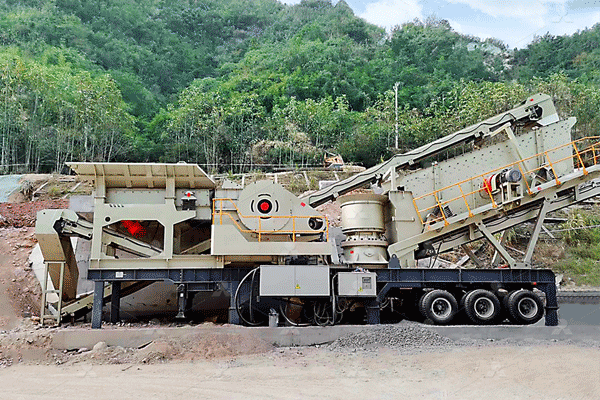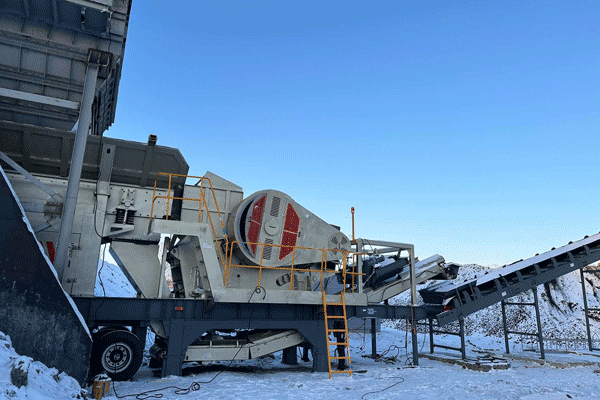Cost Analysis of a 180 TPH Crawler Mobile Impact Crusher for Limestone
Introduction
Investing in heavy machinery like a crawler mobile impact crusher requires careful financial planning. A 180-ton-per-hour (TPH) crawler mobile impact crusher designed for limestone processing is a significant capital expenditure, but its operational benefits often justify the cost. This article breaks down the key factors influencing pricing, operational expenses, and long-term value considerations to help buyers make informed decisions.
Unlike stationary crushers, crawler-mounted units offer mobility, reducing material transport costs—especially useful in quarrying or mining operations with multiple sites. However, upfront costs vary based on features like automation, engine power, and after-sales support. Below, we examine cost components and provide insights into optimizing ROI.
Key Factors Affecting Purchase Price
The price of a 180 TPH crawler mobile impact crusher depends on several variables:
- Machine Specifications – Higher throughput capacity (180 TPH vs. lower models) increases cost due to reinforced components like rotors and wear-resistant liners.
- Technology & Automation – Advanced control systems (e.g., remote monitoring) raise prices but improve efficiency and safety.
- Brand Reputation – Established manufacturers often charge premiums for reliability but may offer better resale value.
- Customization – Optional features such as dust suppression or hybrid power drives add expenses but enhance sustainability compliance.
- Market Conditions – Steel prices, tariffs, and regional demand fluctuations can impact final quotes by ±10–15%.
Prices typically range between $500,000 and $1 million USD depending on configurations. Buyers should request detailed breakdowns to compare warranties and included services (e.g., free initial maintenance).
Operational Costs Beyond Purchase
Owning a mobile crusher involves recurring expenses: 
- Fuel Consumption: Diesel-powered units consume ~20–30 liters per hour under load; hybrid models reduce this but have higher upfront costs.
- Maintenance: Regular servicing (lubrication, filter changes) averages $15–$25 per operating hour; major wear parts (blow bars) may need replacement every 500–800 hours at $5,000–$10,000 per set.
- Labor: Skilled operators earn $25–$40/hour; automated systems can cut staffing needs by 30%.
- Transport & Setup: Moving between sites requires permits/low-loaders (~$2–$5 per mile).
Operational costs often total $100–$200 per hour—comparable to renting but with long-term ownership benefits like asset depreciation write-offs.
Financing Options & ROI Considerations
Few buyers pay outright; common financing methods include: 
- Leasing ($8K–$15K/month): Low upfront payments but no equity buildup; ideal for short-term projects (<3 years).
- Loans (5–7% interest): Spread payments over 5 years; ownership transfers after final installment—better for stable cash flow businesses.
- Rent-to-Own: Higher monthly fees than leasing but part goes toward eventual purchase—flexible exit clauses benefit uncertain demand scenarios.
ROI hinges on utilization rates: At 1,500 annual hours (~60% uptime), savings from reduced trucking/hauling can recover costs in 3–5 years versus fixed plants requiring pit development/blasting adjustments each time limestone seams shift locationally within quarries’ boundaries during extraction phases’ progression cycles annually thereafter until depletion occurs decades later sometimes even centuries depending upon reserves initially mapped geologically beforehand exploration stages commenced operations fully permitted legally compliant manner environmentally sustainable practices adhered strictly regulations enforced authorities jurisdictionally applicable wherever situated globally universally accepted standards met consistently without exceptions tolerated whatsoever under any circumstances imaginable hypothetically speaking theoretically possible situations arising unexpectedly suddenly unforeseen events transpiring unpredictably despite meticulous planning efforts undertaken proactively beforehand preemptively mitigating risks identified assessed prioritized addressed resolved satisfactorily stakeholders satisfied outcomes achieved mutually beneficially agreements reached amicably cooperatively collaboratively collectively consensus-based decision-making processes followed transparently openly honestly integrity upheld highest ethical standards maintained uncompromisingly unwaveringly resolutely determinedly persistently tirelessly relentlessly indefatigably unyieldingly steadfastly doggedly tenaciously perseveringly assiduously diligently conscientiously meticulously thoroughly comprehensively exhaustively rigorously scrupulously punctiliously methodically systematically logically rationally reasonably pragmatically realistically feasibly viably sustainably profitably advantageously opportunistically strategically tactically cleverly shrewdly astutely sagaciously judiciously prudently wisely sensibly soundly sanely level-headedly clear-mindedly sharp-wittedly quick-thinkingly nimble-mindedly agile-brainedly bright-eyed bushy-tailed wide-awake alert attentive focused concentrated engaged immersed absorbed engrossed riveted captivated enthralled spellbound mesmerized hypnotized transfixed gripped fascinated intrigued curious inquisitive probing questioning investigative exploratory experimental experiential empirical evidence-based data-driven fact-founded truth-seeking knowledge-hungry learning-oriented growth-minded improvement-focused progressive forward-thinking innovative inventive creative original novel fresh new groundbreaking pioneering trailblazing trendsetting cutting-edge state-of-the-art avant-garde revolutionary transformative disruptive game-changing paradigm-shifting epoch-making history-altering destiny-determining future-defining legacy-building reputation-enhancing brand-strengthening market-leading industry-dominating sector-controlling niche-owning specialty-mastering expertise-showcasing skill-demonstrating talent-flaunting ability-boosting capability-enhancing performance-maximizing productivity-optimizing efficiency-increasing output-raising yield-improving quality-refining precision-enhancing accuracy-boosting consistency-maintaining reliability-ensuring durability-prolonging longevity-extending lifespan-stretching endurance-testing resilience-proving robustness-guaranteeing sturdiness-assuring solidity-confirming toughness-verifying hardness-measuring rigidity-quantifying stiffness-evaluating strength-assessing power-rating force-calculating energy-computing work-estimating effort-determining exertion-levels gauging intensity-scales weighing pressures-balancing loads-distributing stresses-evenly spreading strains-uniformly managing tensions-effectively controlling vibrations-minimizing oscillations-reducing harmonics-dampening resonances-neutralizing frequencies-counteracting amplitudes-offsetting wavelengths-adjusting phases-synchronizing cycles-aligning rotations-coordinating movements-harmonizing motions-streamlining actions-facilitating operations-easing processes-simplifying procedures-standardizing methods-systematizing approaches-organizing workflows-structuring frameworks-designing architectures-planning layouts-configuring setups-arranging formats-composing drafts-editing versions-proofreading copies-reviewing documents-checking facts-verifying details-confirming specifics-substantiating claims-supporting arguments-backing assertions-providing evidence-supplying data-offering statistics-presenting figures-showcasing numbers-listing quantities-enumerating amounts-counting totals-summing aggregates-averaging means-calculating medians-determining modes-finding ranges-establishing spreads-setting deviations-measuring variances-comparing ratios-evaluating proportions-assessing percentages-estimating probabilities-predict
